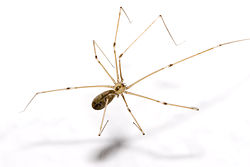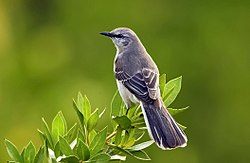



HURRY HOME!!!!!

Hi Everybody!!
Here we are at the last big Rush of the Year 2013. As the Holidays roll into Texas, many people will find icy roads on the way to Grandma's House! A couple of weeks ago, I had glowing ideas of an old fashioned Thanksgiving and a hayride for the Grandkids. Now after having the most awful Flu and covered up by cold, icy, drizzly weather of an Arctic Blast that blew every leaf off the trees, I have reconsidered my plans! Gone is the Hayride. The big dinner-cancelled. I have decided to go straight to the Pumpkin Pie and whipped cream!
So, just to remind You, be flexible with your plans. Do not cover yourself up with so much work that you forget the reason for the season! Enjoy your week! Enjoy your Family!

Link to Photostudy in Album:
https://plus.google.com/photos/117645114459863049265/albums/5949448125619724929
DaddyLongLegs

https://en.wikipedia.org/wiki/Pholcidae
Pholcidae
From Wikipedia, the free encyclopedia
Pholcidae, commonly known as cellar spiders, are a spider family in the suborderAraneomorphae.
Some species, especially Pholcus phalangioides, are commonly called daddy long-legs spider, granddaddy long-legs spider, carpenter spider, daddy long-legger, or vibrating spider.
| Cellar spiders | |
|---|---|
 | |
| Pholcus phalangioides | |
| Scientific classification | |
| Kingdom: | Animalia |
| Phylum: | Arthropoda |
| Class: | Arachnida |
| Order: | Araneae |
| Suborder: | Araneomorphae |
| Superfamily: | Pholcoidea |
| Family: | Pholcidae C. L. Koch, 1851 |
Appearance[edit]
Pholcids are fragile arachnids, the body being 2–10 mm in length with legs which may be up to 50 mm long. Pholcus and Smeringopus have cylindrical abdomens and the eyes are arranged in two lateral groups of three and two smaller mediancontiguous eyes. Eight and six eyes both occur in this family. Spermophora has a small globose abdomen and its eyes are arranged in two groups of three and no median eyes. Pholcids are gray to brown with banding or chevron markings. The shape of the Pholcus and Smeringopus's body resembles that of a peanut.
Habitat[edit]
Pholcids are found in every continent in the world besides Antarctica where it is too cold for them to survive. They hang inverted in messy, irregular, tangled webs. These webs are constructed in dark and damp recesses, in caves, under rocks and loose bark, abandoned mammal burrows in undisturbed areas in buildings and cellars, hence the common name "cellar spiders". However, Pholcids are also quite commonly found in warm, dry places, such as household windows and attics.
Misconceptions[edit]
There is an urban legend stating that daddy long-legs spiders have the most potent venom of any spider, but that their chelicerae(fangs) are either too small or too weak to puncture human skin; the same legend is also repeated of the harvestman and crane fly, also called "daddy long-legs" in some locales. Indeed, pholcid spiders do have a short fang structure (called uncate). However, brown recluse spiders also have uncate fang structure, but are able to deliver medically significant bites. Either pholcid venom is not toxic to humans or there is a musculature difference between the two arachnids, with recluses, being hunting spiders, possessing stronger muscles for fang penetration.[5]
In 2004, the Discovery Channel show MythBusters set out to test the daddy long-legs myth episode 13 - "Buried in concrete".[6]Hosts Jamie Hyneman and Adam Savage first established that the spider's venom was not as toxic as other venoms, after being told about an experiment whereby mice were injected with venom from both a daddy long-legs and a black widow, with the black widow venom producing a much stronger reaction. After measuring the spider's fangs at approximately 0.25 mm (average human skin thickness varies from about 0.5mm to 4mm), Adam Savage allowed himself to be bitten, and reported that the bite produced little more than a mild short-lived burning sensation. This appears to confirm that, contrary to popular belief, pholcid bites can penetrate human skin but will deliver a harmless envenomation. Additionally, recent research by Alan Van Dyke has shown that pholcid venom is relatively weak in its effects on insects as well.[7]
According to Rick Vetter of the University of California at Riverside, the daddy long-legs spider has never harmed a human and there is no evidence that they are dangerous to humans.[8]
The urban legend ostensibly stems from the fact that the daddy long-legs spider is known to prey upon deadly venomous spiders, such as the redback, a member of the black widow genus Latrodectus.[9] By extrapolation, it was thought that if the daddy long-legs spider could regularly kill a spider capable of delivering fatal bites to humans, then it must be more venomous, and the uncate fangs were accused of prohibiting it from killing people.[10] In reality, it is merely quicker than the redback.[citation needed]

Link to photostudy:
https://plus.google.com/photos/117645114459863049265/albums/5949445742720649809

Home for the Holidays: Texas Mockingbird

https://en.wikipedia.org/wiki/Mockingbird
Mockingbird
From Wikipedia, the free encyclopedia
| Mockingbird | |
|---|---|
 | |
| Northern Mockingbird Mimus polyglottos | |
| Scientific classification | |
| Kingdom: | Animalia |
| Phylum: | Chordata |
| Class: | Aves |
| Order: | Passeriformes |
| Family: | Mimidae |

link to photostudy in Album:
https://plus.google.com/photos/117645114459863049265/albums/5949586741641802049

...this is brendasue signing off from Rainbow Creek. See You next time!

O+O

No comments:
Post a Comment
Hi Everybody! Please say hello and follow so I know you are here! Due to the inconsideration of people trying to put commercials on my blog comment area, I have restricted use of anonymous posts. Sorry that some hurt all.
My public email is katescabin@gmail.com No spammers or trolls